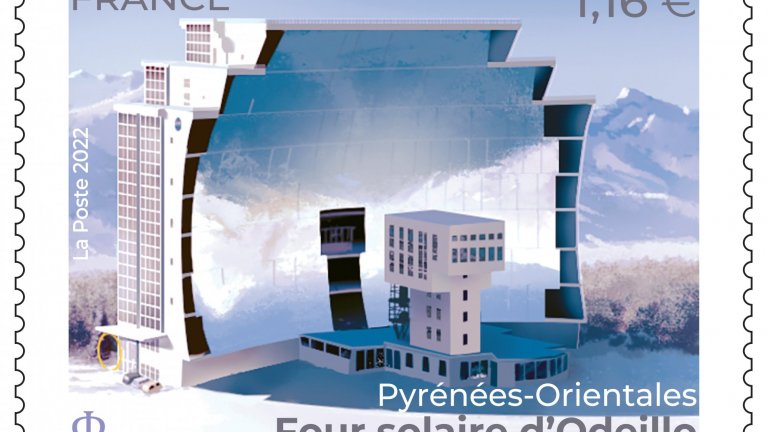
© Designed by Stéphane Humbert-Basset from CNRS photos
Scientific news
The French Post Office is paying tribute to the large solar furnace, Odeillo: an extraordinary instrument which recently celebrated its 50th anniversary. A site with a rich history and an invaluable future.

© Designed by Stéphane Humbert-Basset from CNRS photos
Odeillo, the large solar furnace, located in the small town of Font-Romeu-Odeillo-Via in the Pyrénées-Orientales department, produces thermal power of one megawatt and can reach up to 3,300 °C, due to its array of 63 heliostats and its 54-metre main building covered with mirrors. With its futuristic appearance and its technical achievements, you would not believe that it started operating in 1969... But in fact, its history began in 1946, when Félix Trombe, who then ran the Rare Earth Laboratory at Meudon, managed to focus sunlight using an anti-aircraft mirror captured from the Germans. He used it to melt rare earth ores to extract pure materials whose properties he wanted to study. Bolstered by his success, he left the gloom of the Parisian suburbs to head south and build a prototype of a large solar furnace, firstly at Mont-Louis and then, 20 years later 9 km further away, at Odeillo.
This unique instrument would become one of the cornerstones of the French policy of developing solar energy especially after the Oil Crisis of 1973. A policy which has obviously regained its relevance and necessity in light of the climate challenge that has been facing us with increasing urgency for more than 20 years.
Nowadays, the large solar furnace at Odeillo is used by scientists, particularly the CNRS Promes research laboratory, to conduct high-temperature thermal research, research on the conversion of energy, the production of synthetic fuels, etc.
The Post Office is paying tribute to all this history, but also to the future of the large Odeillo solar furnace, by issuing a stamp with its likeness, which will doubtlessly not only delight science fans as well as philatelists!
Discover the superb site of Odeillo and the research that has been and is still carried out today through our photos and videos.
Our work is guided by the way scientists question the world around them and we translate their research into images to help people to understand the world better and to awaken their curiosity and wonderment.